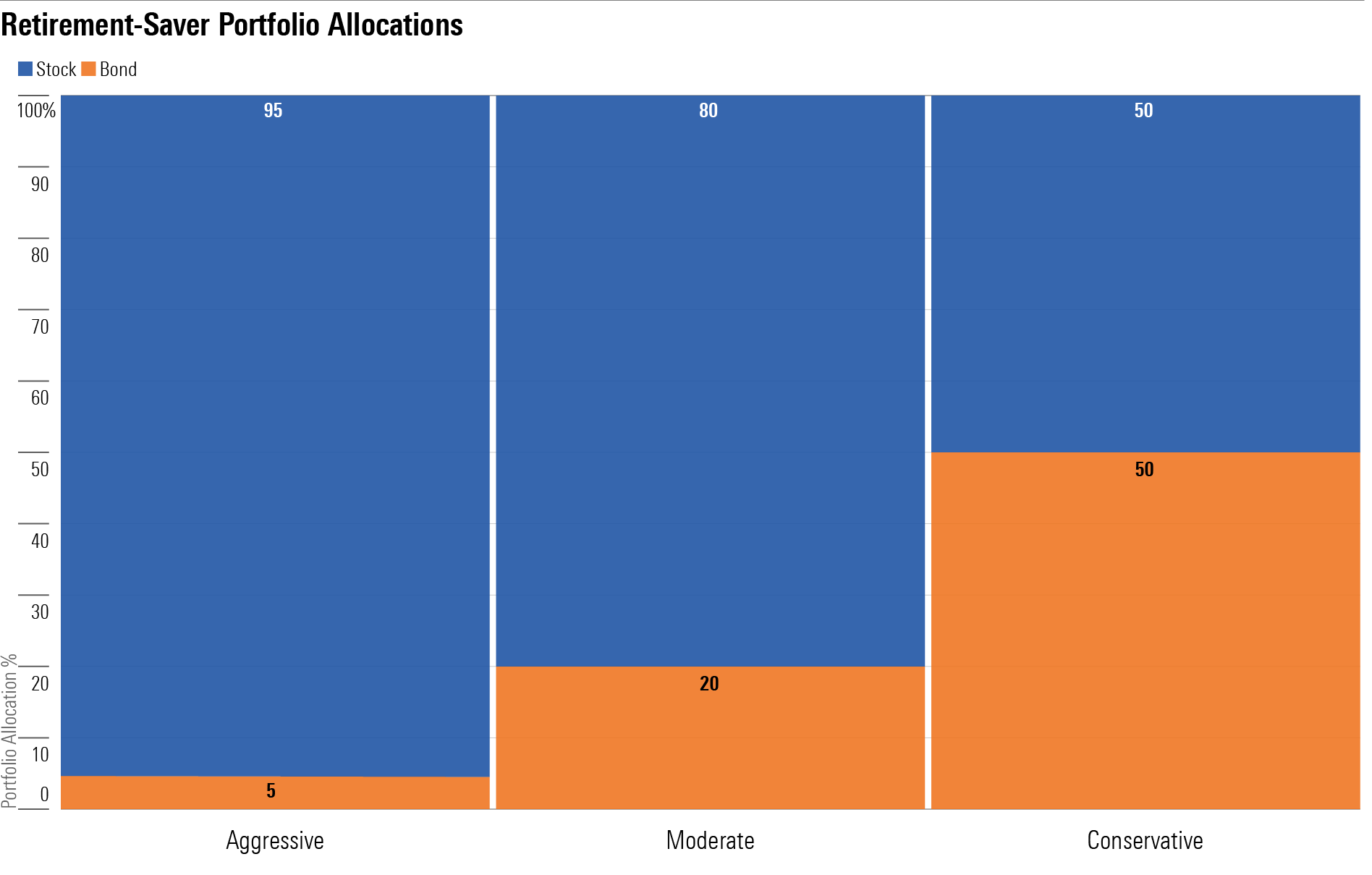Tax-Deferred Retirement-Saver Portfolios for T. Rowe Price Investors
It’s not the cheapest of the cheap, but it’s still possible to use the firm as a one-stop shop.

T. Rowe Price is one of a fairly small handful of firms where one could reasonably stick exclusively with the “house brand” of funds. Although its U.S. equity funds are the most widely recognized in the lineup, its international-equity and fixed-income offerings are also solid. And while T. Rowe fund expenses aren’t Vanguard-low, most have fee-level scores of below average or even low.
This article highlights model T. Rowe Price portfolios for investors who are accumulating assets for retirement in tax-deferred accounts such as IRAs.
About the Portfolios
I’ve used Morningstar’s Lifetime Allocation Indexes to inform the portfolios’ asset allocations and the exposures to subasset classes. To populate the portfolios, I employed no-load, open mutual funds that received Morningstar Medalist ratings from Morningstar’s analyst team. Most of the funds earned Gold ratings, though I’ve used Silver- and Bronze-rated funds in cases when suitable Gold-rated, no-load options that are accepting new investments are unavailable.
The portfolios are geared toward investors’ tax-sheltered accounts, so I didn’t consider holdings tax efficiency when populating the portfolios.
How to Use Them
My key goal with these portfolios is to depict sound asset-allocation and portfolio-management principles rather than to shoot out the lights with performance. That means that investors can use them to help size up their own portfolios’ asset allocations and sub-allocations. Alternatively, investors can use the portfolios as a source of ideas in building out their own portfolios. As with the Bucket portfolios, I’ll employ a strategic (that is, long-term and hands-off) approach to asset allocation; I’ll make changes to the holdings only when individual holdings encounter fundamental problems or changes, or if they no longer rate as Morningstar Medalists.
The portfolios vary in their amounts of stock exposure and in turn their risk levels. The Aggressive portfolio is geared toward someone with many years until retirement and a high tolerance/capacity for short-term volatility. The Conservative portfolio is geared toward people who are just a few years shy of retirement. The Moderate portfolio falls between the two in terms of its risk/return potential.

Aggressive Tax-Deferred Retirement-Saver Portfolio for T. Rowe Price Investors
Anticipated Time Horizon to Retirement: 35-40 years
Risk Tolerance/Capacity: High
Target Stock/Bond Mix: 95/5
- 20%: T. Rowe Price Dividend Growth PRDGX
- 15%: T. Rowe Price Equity Index 500 PREIX
- 10%: T. Rowe Price All-Cap Opportunities PRWAX
- 10%: T. Rowe Price Small-Cap Value PRSVX
- 40%: T. Rowe Price Overseas Stock TROSX
- 5%: T. Rowe Price New Income PRCIX
Moderate Tax-Deferred Retirement-Saver Portfolio for T. Rowe Price Investors
Anticipated Time Horizon to Retirement: 20-25 years
Risk Tolerance/Capacity: Moderate
Target Stock/Bond Mix: 80/20
- 15%: T. Rowe Price Dividend Growth PRDGX
- 15%: T. Rowe Price Equity Index 500 PREIX
- 8%: T. Rowe Price All-Cap Opportunities PRWAX
- 10%: T. Rowe Price Small-Cap Value PRSVX
- 32%: T. Rowe Price Overseas Stock TROSX
- 20%: T. Rowe Price New Income PRCIX
Conservative Tax-Deferred Retirement-Saver Portfolio for T. Rowe Price Investors
Anticipated Time Horizon to Retirement: 2-5 years
Risk Tolerance/Capacity: Low
Target Stock/Bond Mix: 50/50
The author or authors do not own shares in any securities mentioned in this article. Find out about Morningstar’s editorial policies.

/s3.amazonaws.com/arc-authors/morningstar/66112c3a-1edc-4f2a-ad8e-317f22d64dd3.jpg)
/cloudfront-us-east-1.images.arcpublishing.com/morningstar/6ZMXY4RCRNEADPDWYQVTTWALWM.jpg)
/cloudfront-us-east-1.images.arcpublishing.com/morningstar/URSWZ2VN4JCXXALUUYEFYMOBIE.png)
/cloudfront-us-east-1.images.arcpublishing.com/morningstar/CGEMAKSOGVCKBCSH32YM7X5FWI.png)
:quality(80)/s3.amazonaws.com/arc-authors/morningstar/66112c3a-1edc-4f2a-ad8e-317f22d64dd3.jpg)